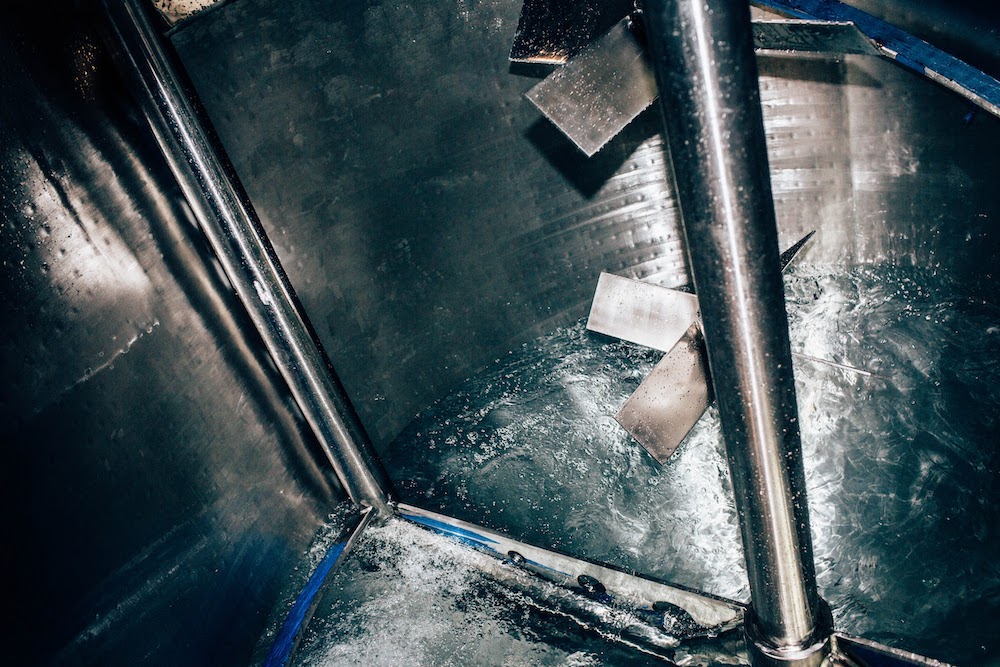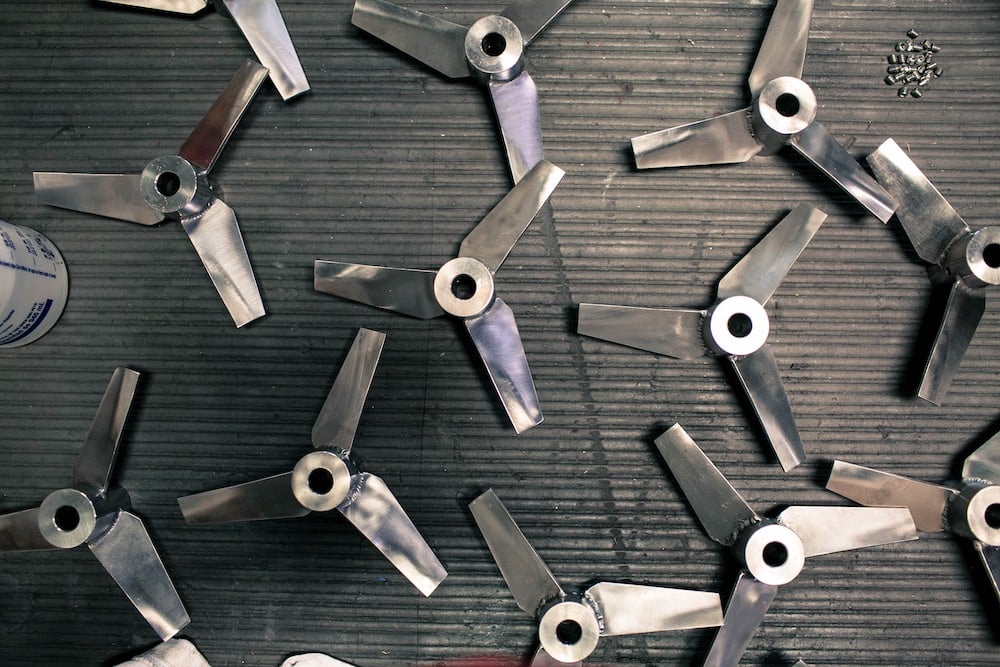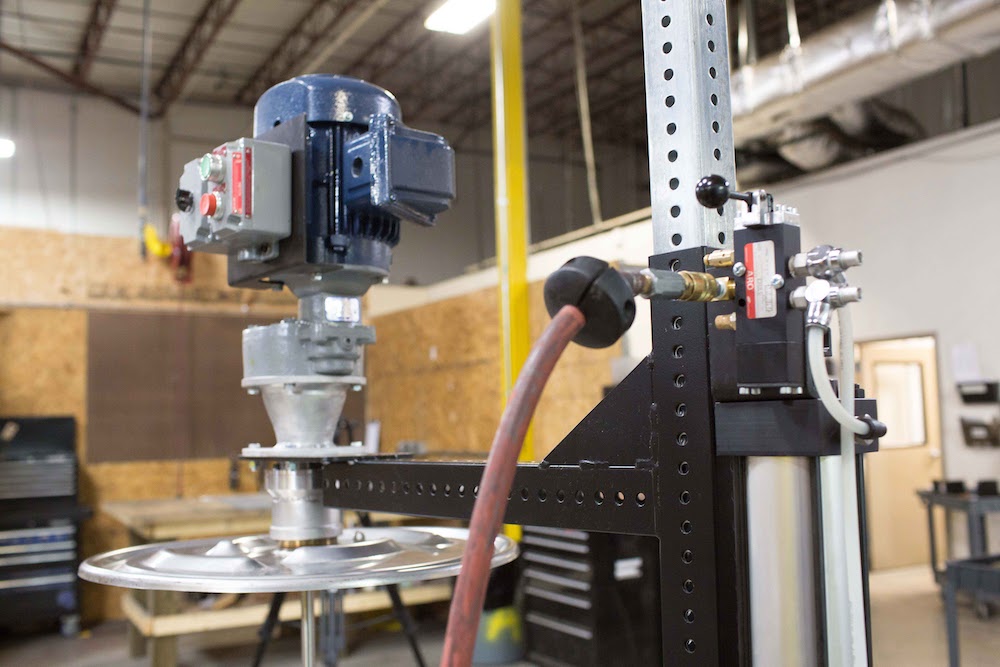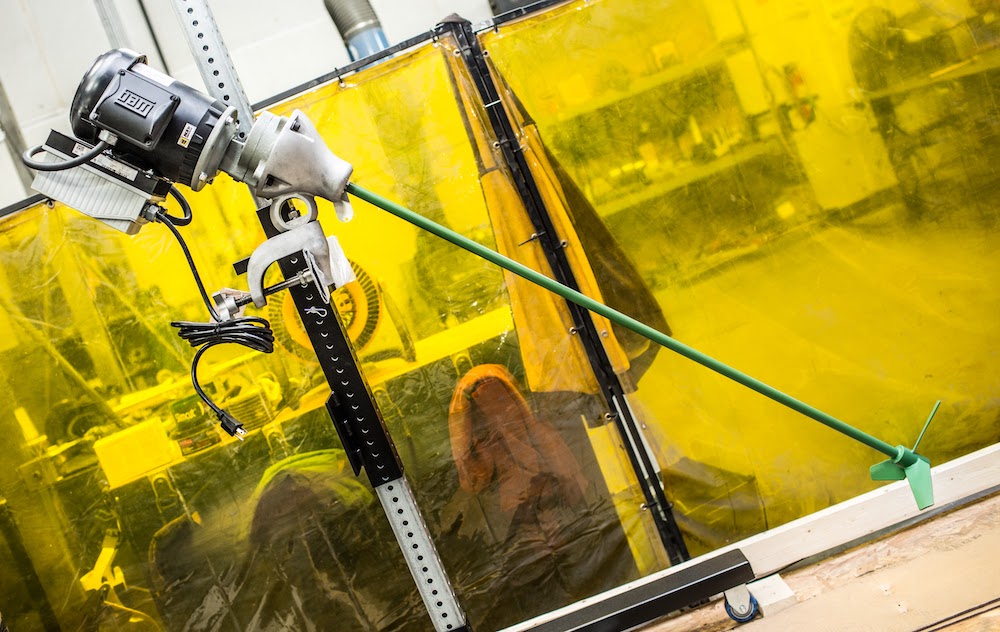Mixer Basics: Impellers
Before we talk about impellers, we have to get some of the nomenclature straightened out. There are impellers, propellers, blades, foils, and a host...

If you are building a mixing system, one of the first things to consider is the size of the tank compared to the size of the impeller. We look at the size of the tank as compared to the size of the mixer using a “D/T ratio” where the “D” stands for the diameter of the mixing blade and the “T” stands for the width of the tank.
In a perfect scenario, you want your impeller's diameter to be one-third of your tank's diameter. For example, if you had a 24-inch wide tank, you would want a blade 8 inches in diameter. Unfortunately, it can be challenging to meet that exact proportion and the ratio is not always a perfect 1/3. We will usually shoot to have D/T ratio between 1/5 to 3/5.
If the ratio is less than 1/5, your blade is too small for your tank. The impeller won’t be able to generate enough flow in order to mix the elements in the tank thoroughly.
If your ratio is more than 3/5, the impeller is too big for the container. A blade that is too big might keep the top half of the mixture from interacting with the bottom half of the mixture because the material might not be able to move freely between the wall of the tank and the blade. However, the exact D/T ratio that you’ll need for your mixing will depend on your specific project.
To determine the placement of the impeller vertically in the tank, the optimal position for the impeller is 1/3 the length of the tank off the bottom of the tank. For example, if you had a tank that was 24 inches tall, you’d want your blade to be 8 inches off the bottom of the tank.
If the impeller is positioned too low in the tank, portions of your mixture may be trapped directly under the impeller due to reduced pumping capacity directly related to the placement of the impeller.
If the impeller is too high in the tank, it can cause vortexing (read more about vortexing in this article on shaft length). If you cannot stick to the 1/3 rule for impeller placement, you can combat vortexing in your tank by having baffles installed. Baffles are long pieces of stainless steel installed around the perimeter of the tank. As fluid flows around and into the baffles, the circular flow that creates a vortex is disrupted and forced into a vertical flow.
Once you have your blade type and size, you'll want to consider what kind of motor you'll need.

Before we talk about impellers, we have to get some of the nomenclature straightened out. There are impellers, propellers, blades, foils, and a host...

Once you have your impeller, motor, and shaft you’ll need to mount the mixer to the container or set up a stand where you can lower the mixer in and...

A mixer shaft is simply the piece of material that connects the motor to the impeller. The shaft can vary by diameter, length, and material. The...